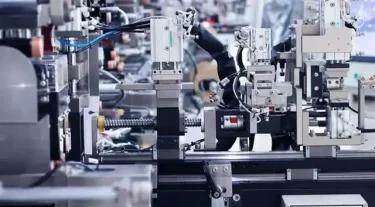
# Tape Production Process and Techniques
## Introduction to Tape Manufacturing
Tape manufacturing is a complex process that involves multiple steps to create adhesive products for various applications. From everyday household uses to industrial applications, tapes serve numerous purposes in our daily lives. The production process requires precision, quality materials, and specialized techniques to ensure the final product meets performance standards.
## Raw Materials in Tape Production
The foundation of any quality tape lies in its raw materials. Manufacturers typically use:
– Backing materials (paper, plastic films, cloth, or foil)
– Adhesive compounds (rubber-based, acrylic, or silicone)
– Release liners (for pressure-sensitive tapes)
– Additives (tackifiers, stabilizers, and fillers)
## The Tape Manufacturing Process
### 1. Backing Material Preparation
The process begins with preparing the backing material. This involves:
– Unwinding large rolls of base material
– Cleaning and treating the surface
– Applying primers if necessary
– Drying the prepared material
### 2. Adhesive Application
There are several methods for applying adhesive:
– Solution coating (adhesive dissolved in solvent)
– Hot melt coating (molten adhesive application)
– Water-based coating (emulsion adhesives)
– 100% solids coating (no solvents or water)
### 3. Drying and Curing
After adhesive application, the tape goes through drying ovens to:
– Remove solvents or water
– Cure the adhesive
– Achieve proper bonding characteristics
### 4. Lamination and Winding
The final steps include:
– Applying release liners (if needed)
– Slitting the material to desired widths
– Winding onto cores for final packaging
– Quality control inspections
## Advanced Tape Manufacturing Techniques
Modern tape production incorporates several advanced techniques:
### Extrusion Coating
This method involves melting plastic resins and extruding them directly onto the backing material, creating a uniform coating layer.
### Multi-layer Coating
Some tapes require multiple adhesive layers with different properties, achieved through sequential coating processes.
### UV Curing
Certain specialty tapes use ultraviolet light to cure the adhesive quickly, allowing for faster production speeds.
## Quality Control in Tape Production
Maintaining consistent quality requires:
– Regular viscosity checks of adhesive solutions
– Thickness measurements at multiple points
– Peel strength testing
– Temperature and humidity control throughout the process
## Environmental Considerations
Modern tape manufacturers focus on:
– Reducing solvent emissions
– Using water-based adhesives
– Recycling production waste
– Developing biodegradable tape options
## Future Trends in Tape Manufacturing
The industry continues to evolve with:
– Nanotechnology in adhesive formulations
– Smart tapes with embedded sensors
– Improved recyclability
– Energy-efficient production methods
From simple packaging tapes to high-performance industrial products, tape manufacturing remains a vital industry that combines chemistry, engineering, and material science to create products we often take for granted in our daily lives.
Keyword: tape manufacturing
